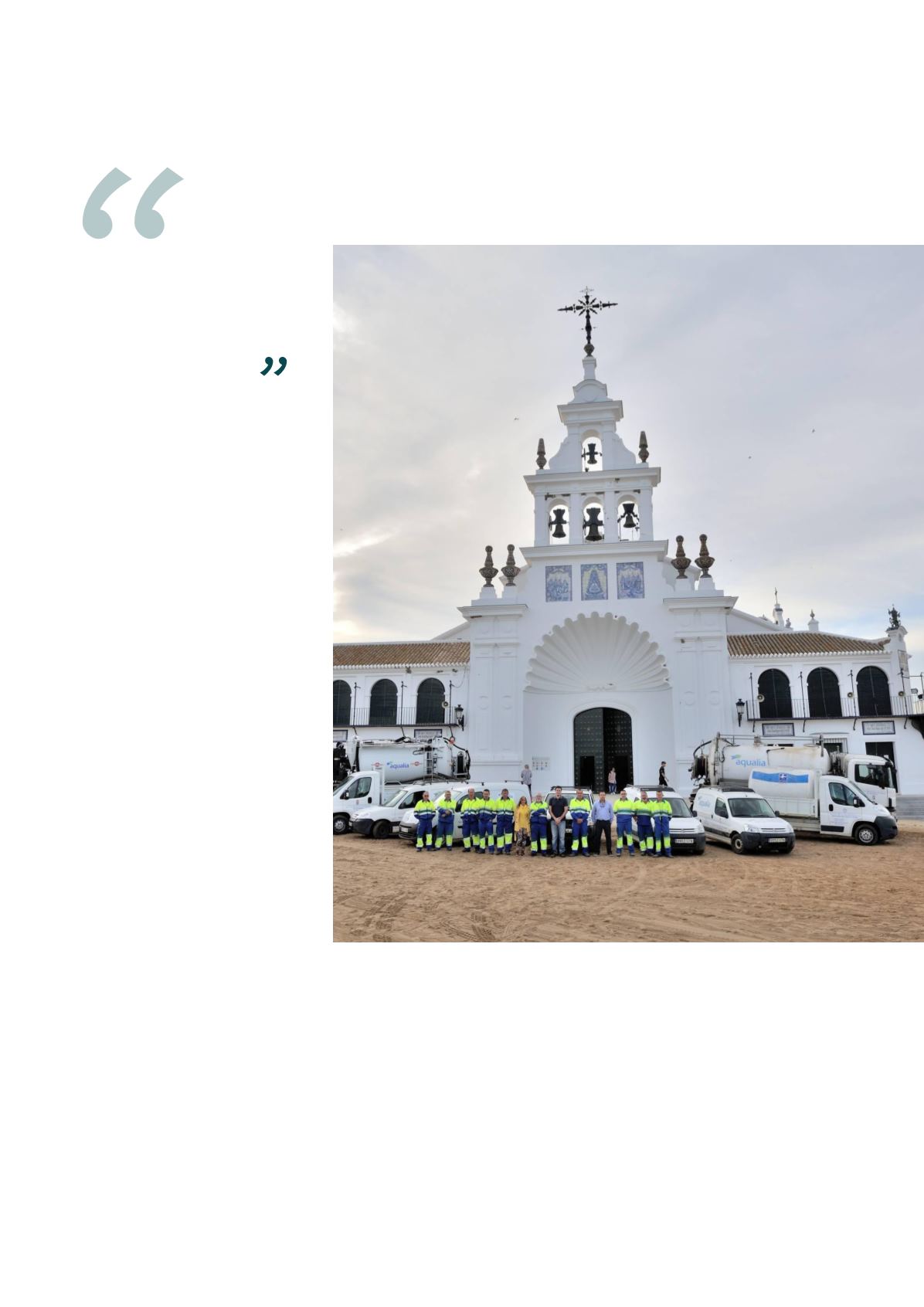

c o m u n n i t i e s
analysed at the input and output of the
treatment plant (pH, conductivity, phospho-
rus, nitrogen, etc.) to check the facility is in
working order and ensure that the output
water will be properly assimilated by the
natural medium where it is discharged, the
Caño Marín Brook.
This wastewater treatment plan is imple-
mented a few weeks before the pilgrimage
begins when Aqualia personnel starts to
inspect and clean the sewerage system,
wastewater pumping stations (WWPS), and
the wastewater treatment plant (WWTP).
During this phase, all the electromechanical
elements that could give rise to problems in
the days with the largest crowds are chec-
ked and replaced.
After water is used, the wastewater is sent
through the sewerage network to the re-
pumping station at the Los Tarajales was-
tewater treatment plant (WWTP) where it is
processed and then reused. The water is
processed and recycled at the WWTP and
recycled to eliminate the physical-chemical
and biological contaminants before it is re-
turned to its natural medium. All of these
processes are essential to ensure the con-
servation of natural resources.
In operations since 2005, the El Rocío
WWTP is able to process 4 million litres per
day. The most salient aspect of the plant
is its pool where surplus water is stored
thereby ensuring that the wastewater that
During these days,
52 million litres of
water are supplied to the
800,000 visitors
could not be processed, which exceeds the
WWTP’s treatment capacity – more than 40
million litres during the pilgrimage – is collec-
ted and properly processed.
Since the treatment process is carried out
in the privileged surroundings of the Natio-
nal Doñana Park, any incidence could affect
the park’s ecosystem. To prevent this, FCC
Aqualia has personnel working during 24
hours a day. Even though the infrastructures
feature telecontrol equipment, the company’s
technicians are constantly at the WWTO and
check the WWPS about every two hours un-
til the pilgrimage is over. To prevent any in-
cidence or electrical failure, Aqualia installs



















